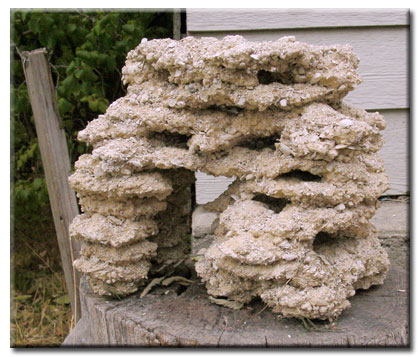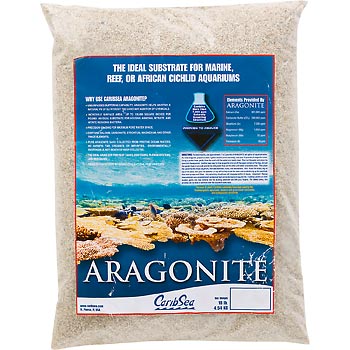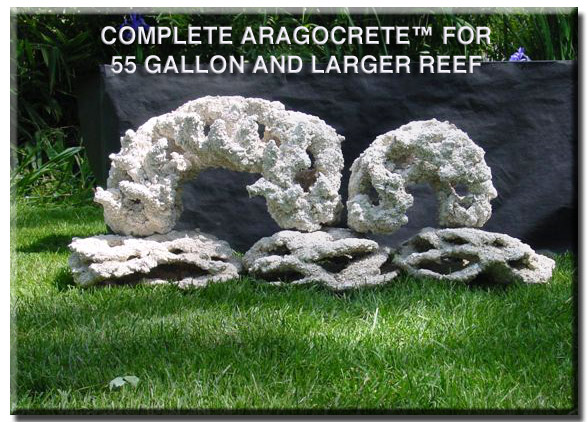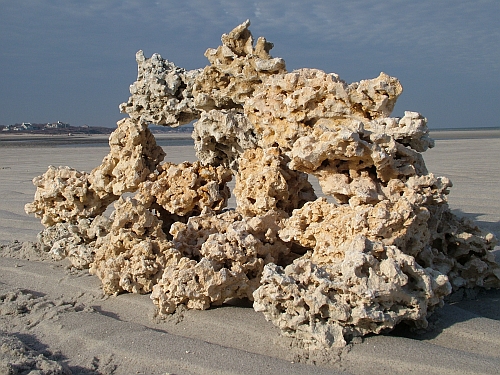Aragocrete: DIY Live Rock
Aragocrete: DIY Live Rock
Live rock is often harvested from the ocean, which leaves a void in the once full reef. A few pounds is not going to effect the ecosystem, but when a few thousand people set up a few thousand gallons worth of water it starts to add up. That can easily be a few hundred thousand pounds of rock in no time at all! Unlike animals, there is no chance in the world that a rock will have babies. There is no way for the rock to quickly replenish itself in the reefs since they are mostly composed of dead coral skeletons. They will regenerate, but not at the rate which we are potentially capable of reaching as the hobby grows. For those of you who do want an alternative to actual ocean rock, or are curious about it, this is going to be quite educational!

image via www.Garf.org
What is it?
Aragocrete is a combination of concrete and aragonite sand. This creates a much less expensive and more environmentally friendly method of having a very natural look that still has the beneficial qualities of live rock. In fact, there are organizations that produce rock just for the damage we have done on the reefs. The fish do not know the difference and corals have no problem attaching.
What is the catch?
Some recipes or methods may result in excess algae. Concrete is not reef safe without being cured in freshwater for months, which to some is too long to wait. Most people do not know what aragocrete is until after they are packed with actual ocean rock so making it is already pointless. Ideally you would make the rock and cure it during your planning stages and cure it while you build your tank and make it perfect. Depending on your concrete to aragonite ratio is you may not have the buffering capabilities of actual ocean rock. You may have a pH battle on your hands. Using a mix of live rock and aragocrete is best, along with a few inches of aragonite sand.
How is it made?
To make aragocrete you will need:
-a container to mix concrete
-a container to make the molds
-4 to 7 parts aragonite sand for the mix
-enough sand to fill your mold containers, should be aragonite sand.
-1 part white portland cement
-a supply of RO or distilled water (tapwater can leave behind harmful chemicals).
-and rock salt for a water softener to make a porous texture. The salt dissolves upon curing.

Draw out a plan. Do you want one large rock or a bunch of tiny ones? Do you want caves? There are certain characteristics you may not think of of you decide to just go at it with no plan. The possibilities are endless with aragocrete. If you are an artist, this may be your chance to sculpt a self portrait for your reef tank! Whether your drawing is a geometric masterpiece or a sloppy blob, it will help you with the process. Now for the prep.
Get your containers lined up. You want to be able to quickly mix and mold simultaneously, so keep them in a line or a circle around you like a drum set. You will have 2 centers. The cement are and the molding area. In your cement area you need your sand, cement, water supply, and mixing tool. Your molding center needs the containers, the molding sand, its own water supply, and the rock salt. You will need easy transport between these areas.
To efficiently mix and mold, pre-portion your particles! Each has their own preference of cement to sand ratio, so play around with some until you find a comfortable mix. Once you find that “Golden Ratio,” portion your sand out into containers with the dry concrete mix. You can even prepare jugs filled with the perfect amount of water! All you have to do is pour out the mix, dump the water in, and stir it up. This way you do not have to make 9,000 Lbs all at once. Sometimes you mix up more than you have room for. Sometimes it can be hard to find a place to dump out excess aragocrete, especially since it may have sea shells lodged in it, though that could make an interesting sidewalk.
The molding procedure is not unlike the standard mud pie or sand castle production you once knew as a child. Fill the mold container with a few inches of sand. The sand acts as a three dimensional mask that you will be building up as you add your cement mix. As you are building up your shapes you can poke the rock salt into the cement to create awesome little pours. You can even poke hole that can be future homes to frag plugs, which are sometimes a pain to position in a naturally shaped rock. Check out YouTube for some great videos on technique for building.
Once you have completely packed your container with sand and cement you can take the next two days off. Keep the rock out of the rain and cold weather. The rock should be pretty solid at this point and you can begin to carefully remove the extra sand. Save it, you may need it again.
When your rock is all unburied it will need to be cured in freshwater for the next few months or it will cause a massive pH spike that never goes down. Soaking the rock in vinegar water that gets changed every few days is the best way to extract the lye from the cement. Some people even leave the rock in a freshwater stream until the next year and wash it off for use. A bit risky, as you never know what could have been in your local waterways that year. Once your rock is cured and cleaned, fill a tub with RO water and set the rocks in that with a powerhead overnight and test the pH over the course of the next couple days. It should stay level if it is ready. Otherwise you will need to keep doing water changes until they are finished. It is not a hard project, just a long one.

image via www.garf.org
Aragocrete is a great alternative to live rock. Showing off your rock can even lead to profit if you get good enough at making it. It is very affordable to make and with a little practice you can mike some very unique rocks that may bag a buck or two! It is more dense, so account for that when stocking your tank or selling it to someone. Where Live rock is worth $5 aragocrete may be worth $2-$3 on average, but at only a fraction of the cost to produce that is not so bad. Go grab a bag of cement today!
Other alternatives for live rock are Marco Rocks (as pictured below) and The Alternative Reef products.

Marco Rocks

Leave a Reply
You must be logged in to post a comment.